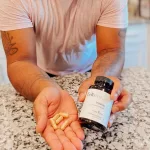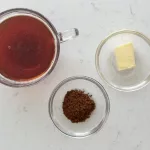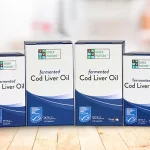
Pear Juice for the Win
Let me guess—you’re probably here because, well, your stomach’s holding a little too tight to its contents. You know the feeling: you sit there, waiting (and waiting), but nothing happens. Constipation: the unglamorous, stubborn villain in the gut-health universe. But isn’t it kind of wild how nature’s most unassuming fruits can come to the rescue? Today we’re diving into how much pear juice should you drink to get a bowel movement. Spoiler alert: you won’t need a gallon. Just a little nudge, really.
So, why pears? Let’s have some real talk about this gentle, juicy friend and just how much of it makes things “move.” Ready to get a bit personal? (If you’ve ever cleared your schedule hoping for a bathroom breakthrough… we’re in this together.)
Why Pears Work Wonders
What Makes Pear Juice Special?
Ever found yourself staring at the juice aisle like it’s a multiple-choice test: prune, apple, maybe cranberry? Pear juice deserves a serious look. Here’s why. It’s sort of like that reliable friend—always mild, never too intense, who quietly gets the job done. The magic lies in a combo of fiber, high water content, and—drumroll—sorbitol, a naturally occurring sugar alcohol that acts as a gentle laxative. (No rocket science. Just pears being pears.)
Let’s break it down in plain English:
- Fiber: Pears are loaded. In juice, not all the fiber survives the squeeze, but you still get some.
- Water: Keeps everything lubricated. Like oiling a creaky door (your gut, basically).
- Sorbitol: Draws water into the colon, softens the stool, and—hello!—nature’s plumbing gets moving again.[1][3]
Little personal moment: When my dad’s doctor told him to try prune juice, he almost lost it (“That stuff is for old folks!”). So, he switched to pear—it tasted better, worked just as well, and let’s just say the bathroom line at home went back to normal.
How Pear Juice Stacks Up
Not All Juices Are Created Equal
Now, before you run out for that giant bottle—let’s compare. How much pear juice should you drink to get a bowel movement depends a bit on what you’re comparing it to. Prune juice is often called the king, but honestly, pears are the quietly effective runner-up you don’t want to overlook. They have more sorbitol than even apples, which are another common pick for mild constipation.[3][11]
| Juice | Sorbitol Content | Fiber per 8oz | Flavor | Who Loves It? |
|---|---|---|---|---|
| Pear | High | 2-3g | Mild & sweet | Kids, picky eaters, anyone avoiding “prune face” |
| Prune | Very High | 2.6g | Strong & earthy | “Will-try-anything” club |
| Apple | Medium | 1-2g | Light & crisp | Infants, the cautious |
But here’s where pears really shine: gentle on the stomach, not likely to send you dashing to the loo mid-meeting. (Ever tried prune juice before a Zoom call? Don’t.)
So… How Much Pear Juice?
Finding the Goldilocks Amount
Now for the main dish: how much pear juice should you drink to get a bowel movement? Ah, the age-old question. The truth is, more is not always better. Sometimes it’s about “just enough.” According to a blend of doctor-approved advice and good old real-life experience, most adults get results with 4 to 8 ounces (that’s half to one cup) once a day.[3][5][1]
Honestly? I once polished off a whole pint thinking, “Faster is better.” That afternoon taught me a lesson. Let’s say… don’t clear your social calendar until you know how your body responds.
Need a quick “starter kit?” Try this:
- Start with 4 ounces (half a cup) of pear juice, preferably chilled (tastes fresher, somehow works better… probably just because you’ll actually finish it).
- If nothing “moves” by the next morning, try bumping it up to 6–8 ounces.
- Still nothing after two days? Don’t keep increasing—check with your doctor, especially if this is an ongoing thing.
Be patient. Sometimes pear juice works its “magic” in just a few hours; other times, it can take up to a day (How fast does pear juice work for constipation in adults is a great spot to peek for timing stories and science).
For Kids and Babies—Is It Different?
Little Guts, Gentle Approach
What about kiddos? Or, if you’re reading this at 2AM with a very cranky, blocked-up baby (been there): the guidance shifts a little. For babies under one, the game plan is gentler.
According to the Children’s Hospital of Philadelphia, try 1 ounce of pear juice mixed with 1 ounce of water, once or twice a day. For toddlers and older children, use slightly bigger servings, but always dilute to avoid an upset tummy.[7][9]
It’s super important not to wing it with infants—always double check with their doctor. And for a whole guide tailored to tiny humans, I love this roundup on Best juice for constipation baby. You’ll find tips to keep snacks, meals, and sippy cups constipation-busting-friendly without drama.
Why Not Just Eat the Fruit?
Juice or Whole Pear?
This question comes up a lot—should you just bite into a pear instead of pouring a glass? Whole fruit means more fiber, which can help, but the liquid form goes down easier (especially if chewing feels like work… or it’s for a picky eater). Plus, the juice concentrates that lovely sorbitol, and gets hydration working double-time for your gut.
Let’s keep it real. Sometimes you just don’t feel like gnawing your way through a big ol’ pear. Juice gets it done quick. Still, a combo of both? That’s peak gut power. Fiber + sorbitol = nature’s dynamic duo.
Making It a Ritual (Not a Chore)
How to Work Pear Juice into Real Life
So… you open the fridge, eyeing that pear juice, but how do you make this habit stick (without turning your kitchen into a juice bar)? Here’s how I’ve woven it into my week:
- Morning kickstart: A small glass before breakfast. Gets everything “primed.”
- Post-workout reward: Hydrating, slightly sweet—way better than boring water.
- On-the-go bottle: If you’re prone to skip fluids on busy days, pour a serving to-go.
- Sneak it in smoothies: Pear pairs (see what I did there?) beautifully with banana, spinach, even a squeeze of lemon. Add chia for an extra fiber bomb.
Pro tip: Don’t let pear juice replace your regular water. Extra hydration is half the trick. Aim for a total of 8+ cups of fluid a day (juices, herbal tea, yes even soup… sorry, coffee doesn’t count for everything).
Let’s Get Real—When Is Enough… Enough?
When to Check In With Your Doc
Just between us? If your gut plays hard-to-get for more than a few days, if you start feeling bloated, nauseous, or just “off,” it’s time to call in professional reinforcements. Don’t be embarrassed—honestly, everyone deals with constipation at some point (nobody brags about it on social, but still!).
Anything involving fever, severe cramps, or blood should always skip the juice fix and head straight to your healthcare team. Pear juice is amazing, but it’s not a miracle worker for more serious stuff.
Pear Juice, Lifesaver for Every Age
Anecdotes & Other Tricks
Alright, mini story time. After a disaster of a weekend road trip (fast food only… my gut rebelled), I got home, gulped down a glass of chilled pear juice with a slice of lemon… and by the next morning? Let’s just say my “traffic jam” cleared without melodrama. Not as epic as the “prune juice challenge,” but way tastier and no mad dashes.
Over time, friends and readers have sent their own hacks—mixing pear with apple, serving it slightly warm on cold mornings, or even adding a pinch of ginger for zing. (Who knew constipation relief could feel kind of… fancy?)
The bottom line? Everybody’s system is different. Some folks swear by 4 ounces, others need a steady 8, once or twice a week as “maintenance.” And you can always experiment, just… not all at once, please.
If you want to nerd out on timing and who should expect results when see How fast does pear juice work for constipation in adults.
Mix and Match: Pear Juice with Other Helpers
Combining Forces for Even Better Results
Let’s say you try pear juice and only get halfway to “mission accomplished.” Don’t panic—it often just means you need a little more support: more fiber, more movement, more hydration. Sometimes I’ll toss a pear into my oatmeal the same day as drinking juice, or do a brisk walk after my glass. Movement wakes up your digestive tract like coffee wakes your brain.
Bringing in reinforcements? Try combining pear juice with prunes, apples, or stewed apricots. And don’t forget old-school tricks like a warm glass of water with lemon first thing in the morning (ancient wisdom for a reason). For families juggling kids and grownups, check out the Best juice for constipation baby article… even if you’re not parenting little ones, there are tips to suit every age and palate.
Final Thoughts: Pear Juice, Your Gut’s New Favorite Routine
Let’s round it out. How much pear juice should you drink to get a bowel movement? Most adults start with 4–8 ounces daily, adjusting based on results and comfort. Pear juice works because it’s high in sorbitol plus some fiber and all that lovely hydration. It tastes good, works gently, and—when you build it into your routine with water and real foods—can transform the way you feel about, well… your gut.
If you’ve been in gut agony (we’ve all been there), give pear juice a try. Mix it up: drink it chilled, blend it in a smoothie, or sip it alongside a fiber-rich snack. If results feel slow or you’re helping a little one, tweak the dose, dilute as needed, and never hesitate to ask a professional for advice. And if you want to geek out on timing and science, check out the details in How fast does pear juice work for constipation in adults. Or for parent-specific tips, drop by the handy Best juice for constipation baby guide.
You deserve a gut that’s happy, light, and—let’s be honest—reliably regular! Have your own tip or funny story about juice and “bathroom victories?” Share it below. We’re all rooting for you (and your insides)! Cheers to gentle relief.


















Leave a Reply
You must be logged in to post a comment.